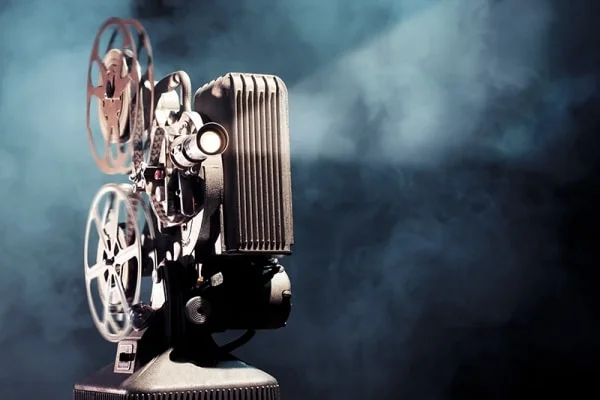Beautifully aged, Cinema has come a long way since its inception and we believe it still has a million miles to go! It is the best and most effective form of storytelling and expression; winning over multitudes of hearts, more so capturing souls. Ever wondered what it would have been without it? You can’t imagine life without cinema, right? Neither can we!
Cinema has evolved beyond one’s imagination, this phenomena first took place in the 17th century with the use of magic lanterns.
The novelty behind these magic lanterns is what made it so popular back in the 1800’s where no social gathering, especially dinner, was complete without a presentation, which led to the production of motion toys. These toys were a simpler version of the lanterns that were bound to home usage which resulted out of scientific experiments! One such experiment conducted was to validate the persistence of vision, which checked the ability of the eye to retain an image even after the source is removed. This gave rise to many attempts to combine separate still images into a single moving image; thus giving rise to many projection systems.
The Thaumatrope was created by John Ayrton in Paris in 1862 that had a round card attached to a string, with one side of a picture of a horse and the other a picture of a man in a riding position. When the card was spun, it seemed as if the man was riding the horse.
The Phenakistoscope was built by several different inventors in the early 1800’s, however the most noted one came from Joseph Plateau, 1832. This invention was a plate sized slotted disk with sequences of images; the person looking though the slots of this device saw a moving image, when it was spun.
The Zoetrope, invented by William George Horner, was a bowl like device with a strip of drawings around the interior circumference. The viewer, when looked through slots could see a moving image, when the bowl was spun. This became widely available after 1867.
Developed in the early 1870’s by Emile Reynaud, the Praxiniscope, was almost the exact same things as the Zoetrope only it used mirrors in the center of the drum instead of the slots outside.
The year 1872 proved to be exceptional for cinema. This year, Eadweard Muybridge began his experimentation on capturing moving images. Through umpteen number of takes, one take was a jackpot, where he placed twelve cameras on a race horse track. Spreading thread across the track, he attached the thread in contact with the camera’s shutter. Once the horse ran across the track, it’s legs broke the threads, causing the cameras to operate in sequence. The final result were 12 photos showing a horse’s gait. With an invention of his own called the Zoopraxiscope, he was able to project these images, creating a motion photography and what seems to be the first movie to ever exist!
In 1885, George Eastman and William H. Walker developed the very first film reel; sensitized paper created with a gelatin emulsion. A year later it was replaced with celluloid, which was a synthetic plastic material invented in the 1870’s used in the chemical compound of cellulose nitrate.
Invention of the Kintegraph took place by the hands of Thomas Edison’s British employee William Kennedy Laurie Dickenson. A machine similar to the camera, it could capture a sequence of images; it automatically took a picture of the moving image every half second. These captured images were then placed in his other invention, the Kintescope, which had a motor and shutter mechanism that ran a loop of film past an electric light source. The spectator would then peer through a small window created to see the moving image.
Post the invention of Kintescope and the Kintegraph, it was time for the Lumiere brothers :Auguste and Louis! These masterminds created a light weight hand cranked mechanism called the Cinematographe. It could take pictures and could project large images quickly when it was linked with a projecting equipment.
With the Cinematographer making its presence felt worldwide, the German, English, Italian, British, and American inventors were brimming with impatience to create the next big invention that could surpass everything created this far in the history of film making. The transition of film into the 1900’s was stimulated by the increasing competition among many inventors by introducing facets of unbeatable technology! This ensured cinema would never be the same again; there was only a way up from where it started with movies like ‘The Big Swallow’, ‘Voyage to the Moon’, ‘The Life of an American Fireman’ and too many more to even count.
Wasn’t that an amazing amalgamation of cinema lovers trying to build a parallel world? Want to know how cinema made its way to India? Stay tuned, we have the real inside stories.




